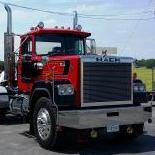-
Similar Content
-
- 1 reply
- 2,702 views
-
- 28 replies
- 4,593 views
-
- 6 replies
- 3,243 views
-
- 2 replies
- 3,233 views
-
- 9 replies
- 3,286 views
-
-
Recently Browsing 0 members
- No registered users viewing this page.







Recommended Posts
Join the conversation
You can post now and register later. If you have an account, sign in now to post with your account.